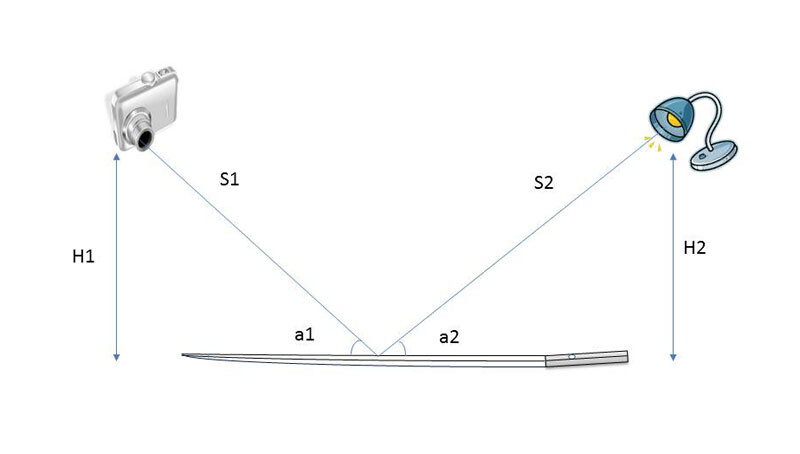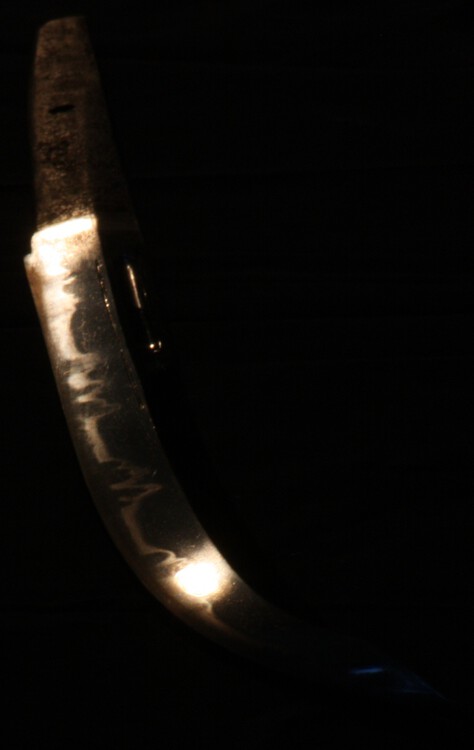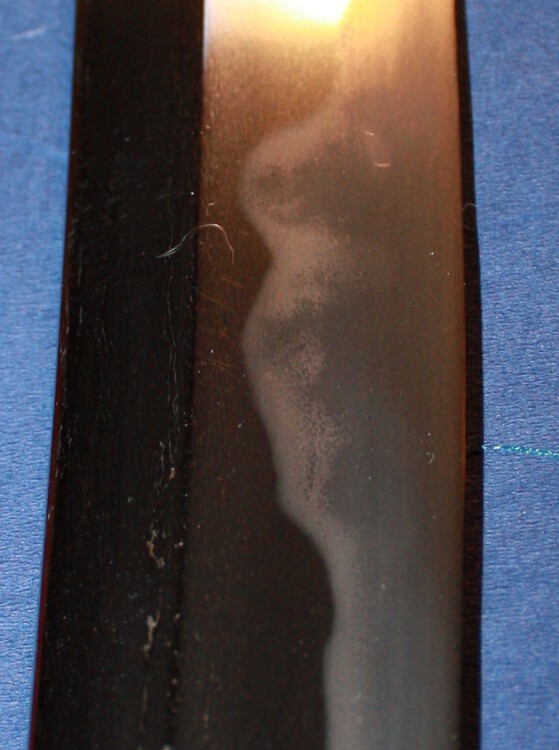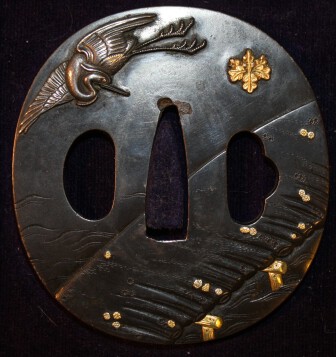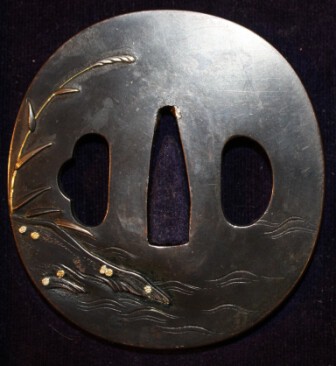-
Posts
497 -
Joined
-
Last visited
-
Days Won
1
Everything posted by Veli
-
Hello! Please sign your posts by your real name; it is nicer to discuss when you can address the other members by name... You seem to have a real, shinto period katana/long wakizashi (depending whether the blade length is over 60 cm or not). You did a good job translating the kanji! I would also say that this is not the work of the first generation who worked in the Kanbun period (1661). You can see yourself how different the two last kanji are as compared to the 1st gen. mei example in a reliable reference book (Fujishiro's). .jpg] Whether this is a 2nd generation signature, I do not know. There is something in the signature that does make me uneasy, but I am no expert. As we all do all the time in our research, you should also take into account the possibility that the signature is gimei (false). Gimei does not mean that the signature is a late addition, nor does it compromise the fact that the blade is real and old. Veli
-
Hi Austin, I do not know if this is of any use, but Kozu Haku Oshigata (Honma Kunzan) contains the following Sadatsugu koto oshigata. Unfortunately the information is limited to that he signed Sadatsugu Saku, and worked in Bitchu province. Veli
-
Hi Niclas! The thread has been here for a while... http://www.nihontomessageboard.com/nmb/viewtopic.php?f=9&t=10640 I am not sure whether the skilled photographers are just modest or wanting to keep their secrets... A proposal for parameter template is there in any case. I would very much like to read about your photography methods; the pictures you have posted earlier reveal blade characteristrics very nicely! Veli
-
Hi! Please sign your posts by your real name; discussion feels more relaxed that way! On top of this page there is a link to Frequently Asked Questions (FAQ); You can find a lot of advice and book recommendations from there. If you want to have an unsigned sword with minimized risk, you might consider buying one with NBTHK or NTHK papers... Veli
-
Hi Curtis! Sorry for being obscure... The signature Bizen (no) Kuni Osafune Kiyomitsu means that the sword was forged by a smith called Kiyomitsu who lived in Osafune village of Bizen province, very probably in the 16th century. Swordsmiths of Bizen Osafune are very well known and famous. Your blade is probably not one of their masterpieces, rather a weapon made for war, but still of a quite decent origin. The condition of the sword seems poor. You could show it to a polisher (who has received training in Japan) for assessment of the possibility and cost of restoration, unless you just decide to maintain it as it is. These are only my personal opinions, I am not a top expert on Japanese swords... BR, Veli
-
Please sign by your real name. The signature reads Bizen no Kuni Osafune Kiyomitsu. Late koto. The signature looks credible to me... Any markings on the other side of the tang? Veli
-
Hi Niclas! Yes, quite an impressive blade. If I remember correctly, I did see this blade at a US dealer website for some months ago. What is most remarkable, If i would see this kind of blade without knowing the background, I would probably claim it to be nambokucho or earlier; just look at the nakago! But it is shinshinto... Veli
-
OK, here we go! The aim of this topic is to share photography tips with those who are interested in improving their nihon-to photographing skills. If you have succeeded in taking a picture that shows some characteristics of nihon-to in a way you are happy with, please tell us how. Maybe this topic helps us to move towards the ultimate goal (maybe impossible one): a photograph of a blade, showing details of yakiba and hada over the entire length of the blade! I give an example of the way I’d list the parameters. I am not an expert in photography, nor a native English speaker, so please feel free to correct/suggest! Also, the example picture is not as good as many seen on this forum recently! Blade: Mumei kanmuri-otoshi wakizashi with naginata-hi, nagasa 51 cm. What did I want to show with this photograph: The yakiba in (almost) full length Light source type: incandescent light bulb (spotlight), 40 W, 2 pcs Light source-blade distance (S2): 2 m Light source angle (a2): approx. 12 deg (lightbulb 1); 17 deg (lightbulb 2) Light source elevation from blade level (H2): 40 cm (lightbulb 1) 60 cm (lightbulb 2) Ambient light: daytime, indoors, room lights off Camera-blade distance (S1): 2 m Camera line of sight angle with blade (a1): approx. 15 deg Camera elevation from the plane defined by the blade surface (H1): 50 cm Camera type: Canon EOS 450 D Objective type: Canon EF-S 55-250 mm (I used approx. 150 mm focal length) Image stabilizer: Yes Camera pedestal: Aluminum tripod Flash: No Trigger: self-timer 2 s Shutter speed: Auto Exposure measurement: spot measurement close to the brightest spot Aperture: 30 Focus: manual Image postprocessing: crop, compress, slightly adjust brightness. Sample Picture: If you do not know some parameter, just leave it blank. Measurements do not need to be accurate. Please feel free to use imperial measurements if that is more convenient. Please give comments: is this understandable? Is there anything else that should be added into the listing? Veli
-
Hi Rob, I would use only uchiko. Metal cleaners may have acidic or other corrosive components (meant for oxide removal) that may penetrate the dislocations in the metal and kind of open the steel surface - though on a scale that is difficult to see by a naked eye. We are extremely conservative on this forum, as you have noticed - and for a good reason Veli
-
Rich, Just like others, I admire your skill of photography (as well as the Bizen tachi you photographed). I wonder if we should open a new thread in "General Nihonto Related Discussion" called e.g. "Ultimate Photography", where members who have taken such a great photographs (or even decent ones) could share the parameters they used (light source type, lighting angles, distances source-object-camera, camera type, objective specs, aperture used, pedestal use, triggering method, exposure selection etc. This would help us all on our way towards the Holy Grail of the nihonto photography: If a sufficient number of members think this is a good idea, I volunteer to open the thread and draft a list of questions. Veli
-
Thanks for your comments, Ron. The mei is Hizen no Kuni ju Fujiwara Yoshihiro. The workmanship seems to match the mei, but let's see what kind of comments it gets... BR, Veli
-
I hope I am not just ... ... but here's some pictures of the little souvenier from my Japan trip in May. Personally I think there are never too many pictures of naginata. The nagasa is only 37 cm, but the motokasane is over 8 mm, and the blade feels heavy in hand. If this is what the Japanese women used for self-defence, I'll surely promise to be extremely polite and respectful towards all the lonely Japanese ladies :D BR, Veli
-
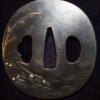
Poll:- New collectors and ages of Nihonto enthusiasts
Veli replied to Brian's topic in General Nihonto Related Discussion
Hello Bo! What a fascinating story! I enjoyed reading it! I guess the lack of responses is caused by the fact that it is extremely difficult to say anything definitive of a mumei, shinogi-zukuri, out-of-polish wakizashi, based on photographs only. The older members here are very knowledgeable, but they are just human beings, not omniscient Kami BR, Veli -
Rob, Here's some info (from Hawley's Japanese swordsmiths) of the smiths who signed with these kanji. It is often the case that you (unless you are a native speaker) cannot find the kanji from on-line or printed dictionaries. But after staring at hundreds or thousands of real signatures, you gradually start to memorize the different ways the kanji can be carved. Yumoto's book (The Samurai Sword) has a nice little table of writing forms that is often of help to me, even in this case! This is not easy, but a lot of fun! This forum is a great place to learn, too. I usually read through all the translation questions to keep learning... But finally, you cannot do this without a good library! BR, Veli
-
Hi Rob! The signature structure in this case is XX Z YY where XX is province, Z has a meaning "resident of XX" and YY is the smith's art name (this is a very usual signature structure). Hope this helps. The kanji in this case do not exactly look like printed versions! If you feel frustrated after a few hours of trying, please ask for more hints! BR, Veli
-
Hawley lists only four smiths signing with 正定: Mihara ju Masasada saku (1504), Bishu Mihara ju Masasada (saku) (1573), Masasada (Musashi, 1789) Yamato Kuni Fujiwara Masasada (1573) Now the Musashi province smith seems to be the only one who primarily signed niji mei. (This is just what is written in Hawley's) But I agree with Keith that the nakago looks significantly older than 18th-19th c. BR, Veli
-
In my unlearned opinion, your blade might be from early-mid 1800's (or even from much earlier period), but definitely not from 1900's. BR, Veli
-
Hello Ryan! So your sword was signed. Very good. The signature looks like Masasada 正定 (others will correct if I read wrong). Not many smiths signed this way. BR, Veli
-
Hello Ryan! I am not one of the top experts in here, but I'd like to give a couple of comments anyway: First of all, your decision of not restoring the blade yourself was a very wise one! The blade may be valuable, or may be of little value, but now you still have the option to have it properly restored! The blade shape (shobu-zukuri) is not the most usual one, and many collectors (including myself) prefer it over the usual shinogi-zukuri shape. The blade is out of polish, and might also be be slightly tired, i.e. seen many polishes (see the slight curvature of the cutting edge above the habaki). Due to bad polish, it is difficult to say anything else. What remains of the fittings looks decent to me! Not the worst, not the very best. If the duct tape has been assembled lately (during the last few weeks), please try to remove it very carefully. Stop if the lacquer starts to come off. The tape should not be applied directly to the saya, because removing it after it sticks to the surface damages the lacquer. The correct method is to put a clean piece of paper under the tape wrapped around the saya, so that the tape glue does not come in contact with the saya. Please give us blade dimensions (length, width, thickness) and if possible, remove the tsuka (hilt) and take photographs of the nakago (tang). It is important to see whether the blade is o-suriage (cut shortened, signature lost), or ubu (unshortened) or even signed... Instructions about tsuka removal: http://www.aoi-art.com/hanbaikousaku/treatment.html BR, Veli
-
Mr. Rose, Did I understand correctly that there still is a bend at the location of the supposed burn mark? Is the supposed blowtorch damage equally visible on both sides of the blade? BR, Veli
-
Hi John, Omote might also read Yukinaga... The heating damage looks bad, unfortunately... On the ura, there is still something after Yukihisa: X Saku??? BR, Veli
-
Hi! Darn hard to see, so I am just drafting here: Hoshu Sanju ju Kaimoto (X X )Yukihisa Dated Keicho (roku?) nen (hachi?) Gatsu Hi Yukihisa (August 1601) Anyone see better? BR, Veli
-
Yes indeed! http://www.militaria.co.za/nmb/viewtopic.php?f=9&t=7089&hilit=onna BR, Veli
-
-
Sometimes the real value of a blade is in the learning experience it provides... especially if the blade displays good workmanship and strong, characteristic features. Paul, how does the hada of your yondai Tadayoshi compare to the pictures I posted? My blade has very, very tight, but also a bit featureless as well as very uniform hada. It is not too different from the hada of the nice yondai Tadayoshi katana on the Nihontocraft web pages. BR, Veli






